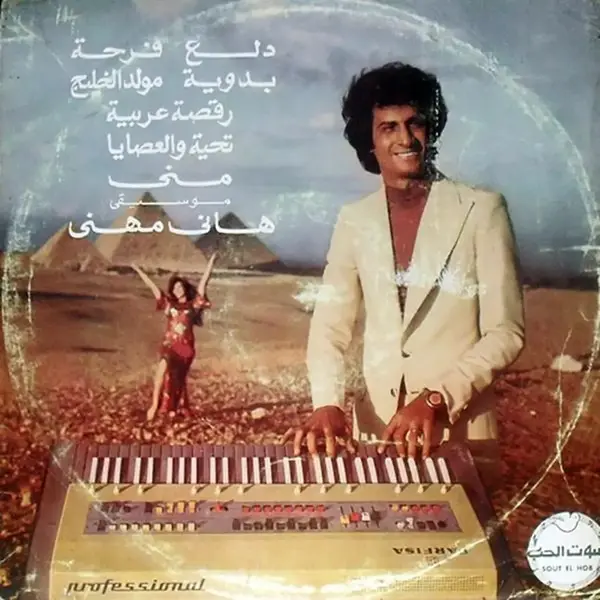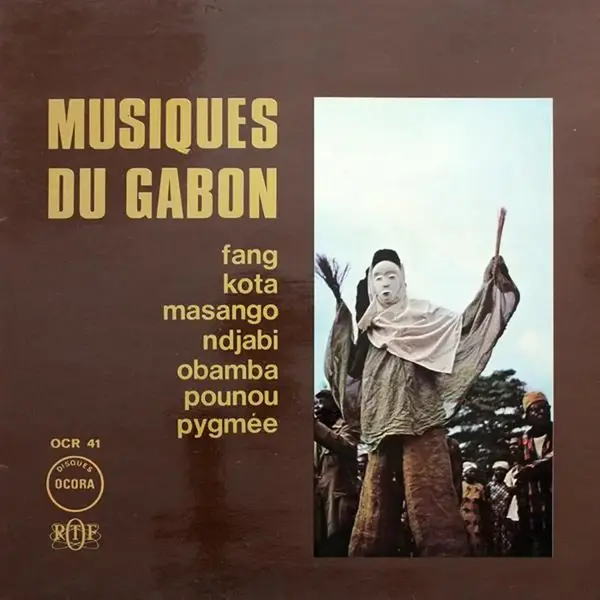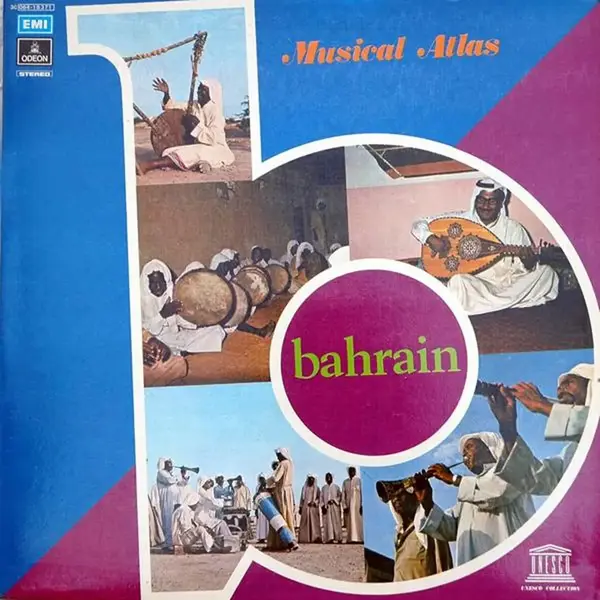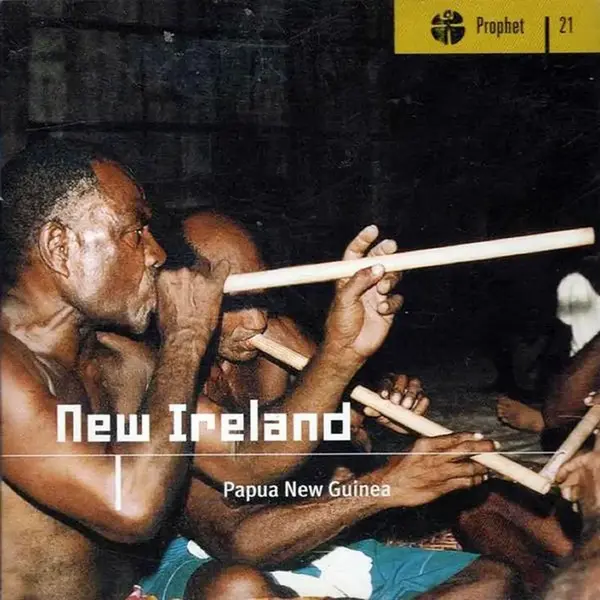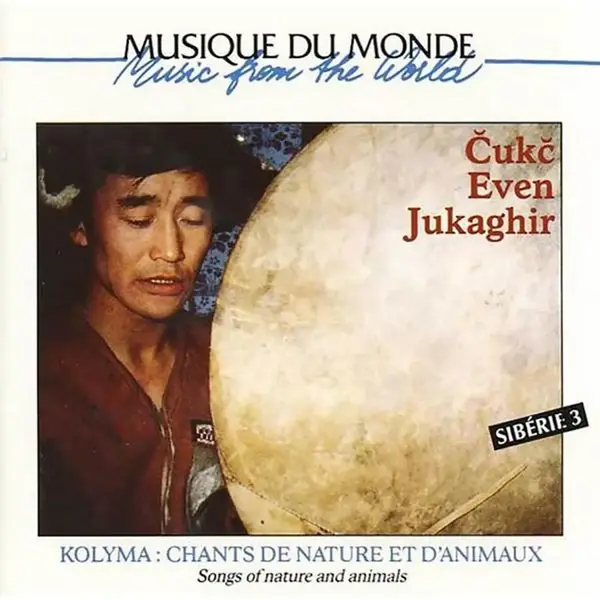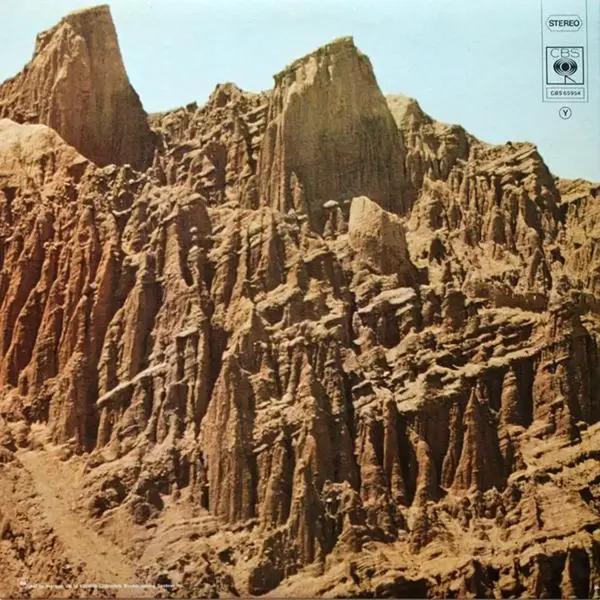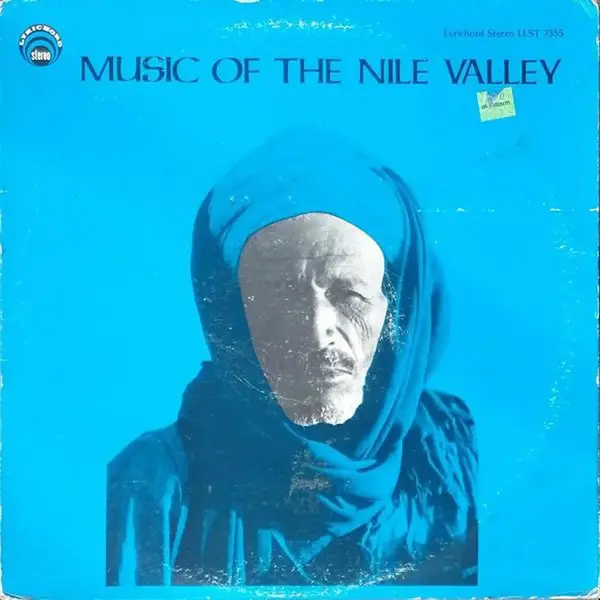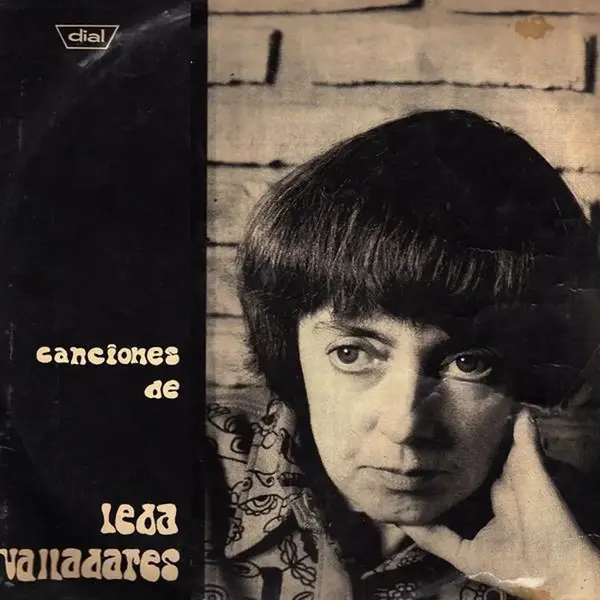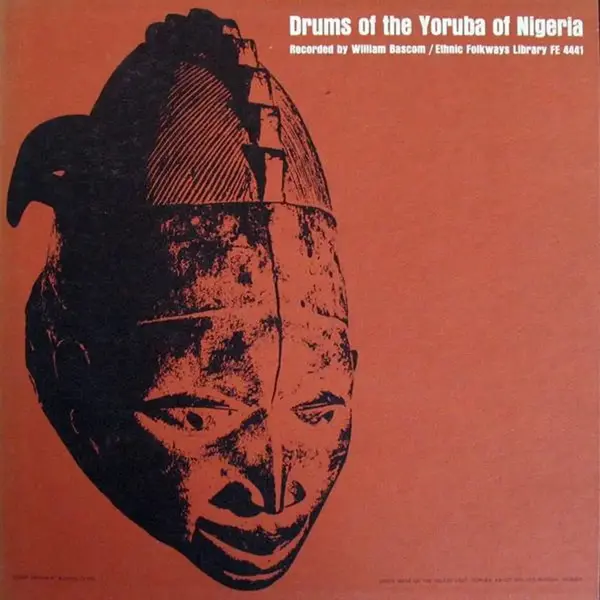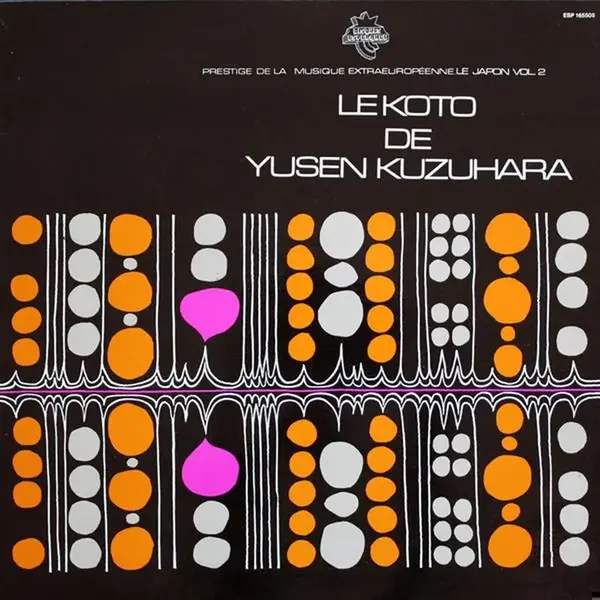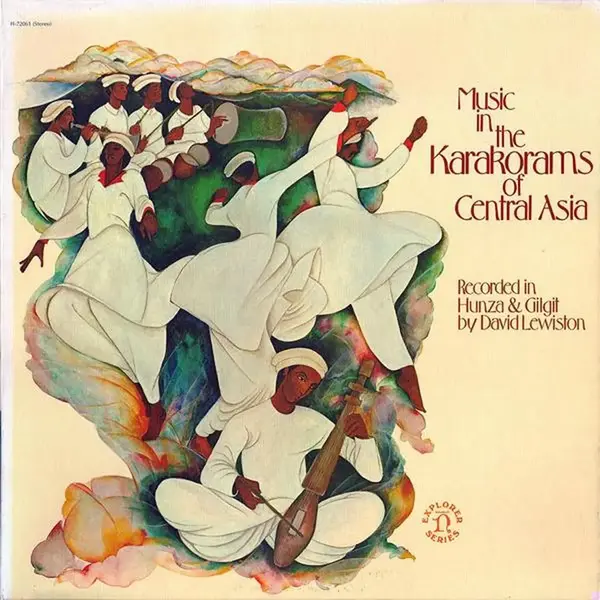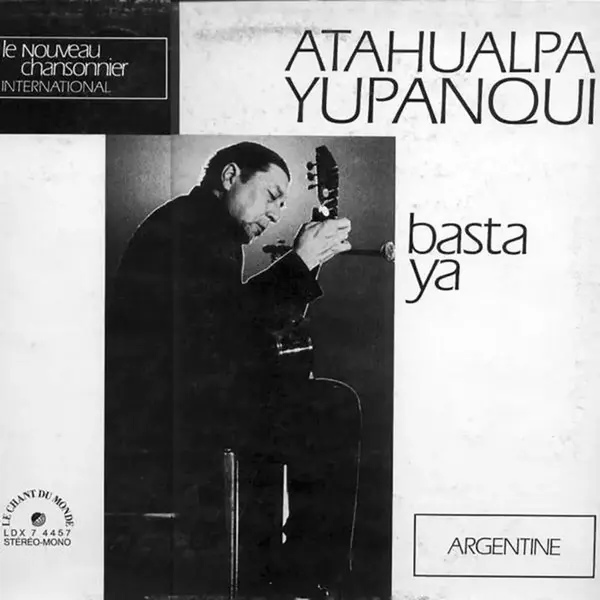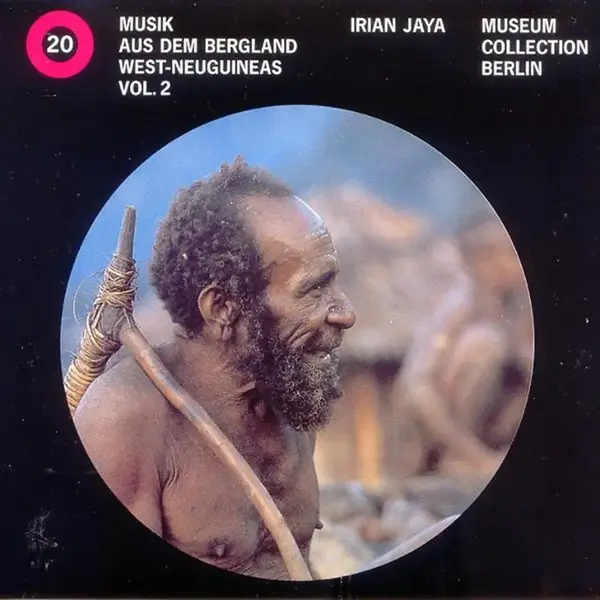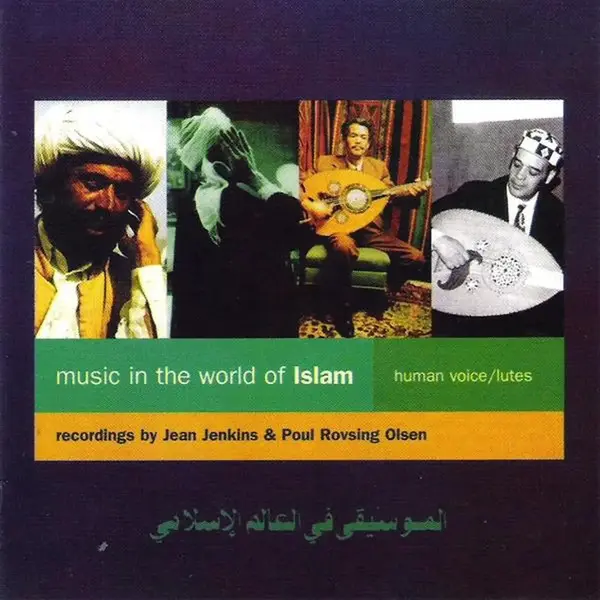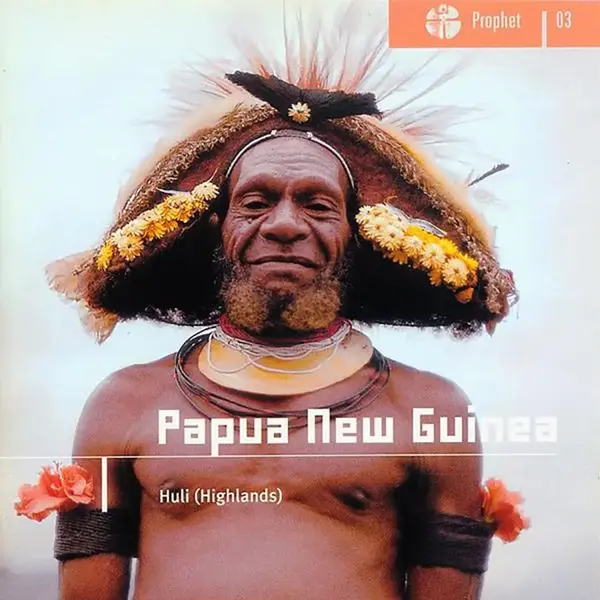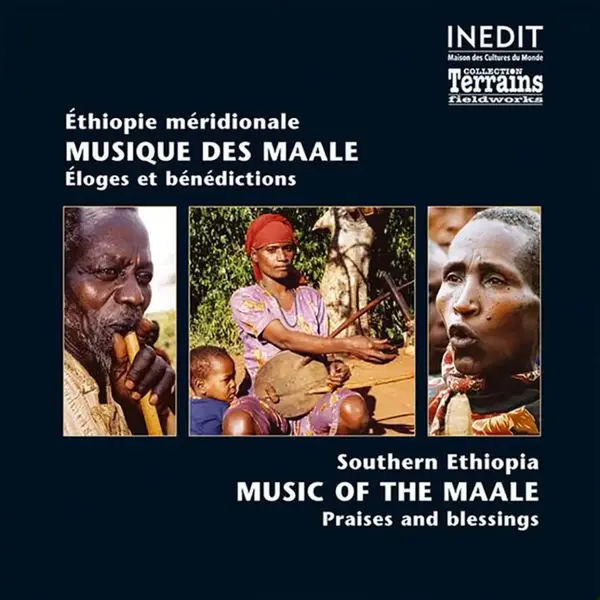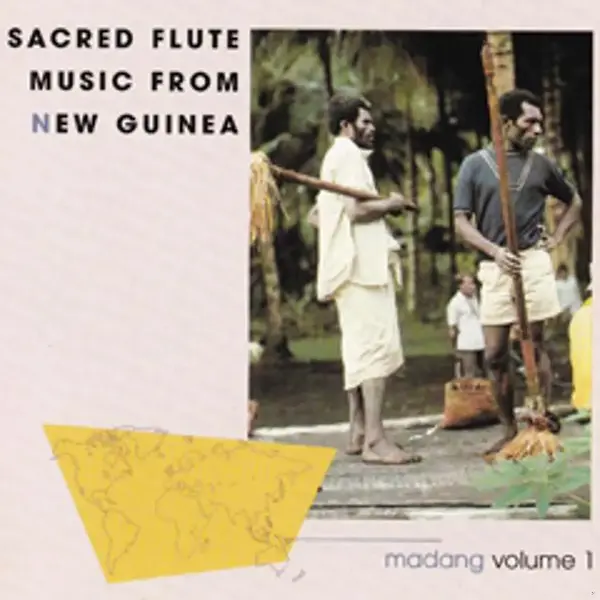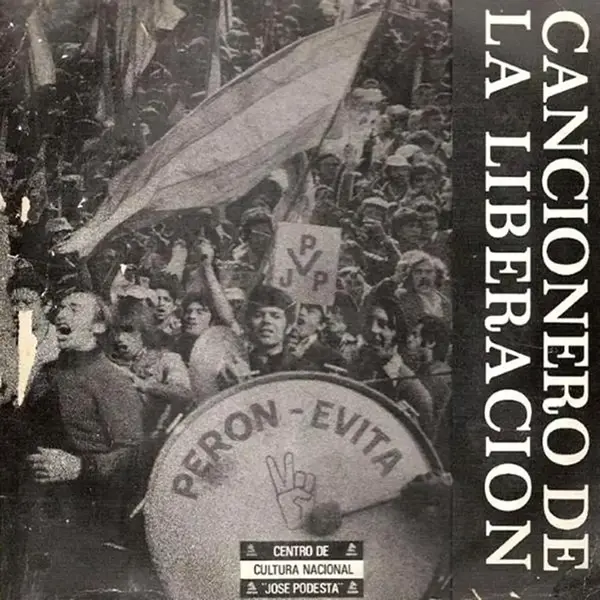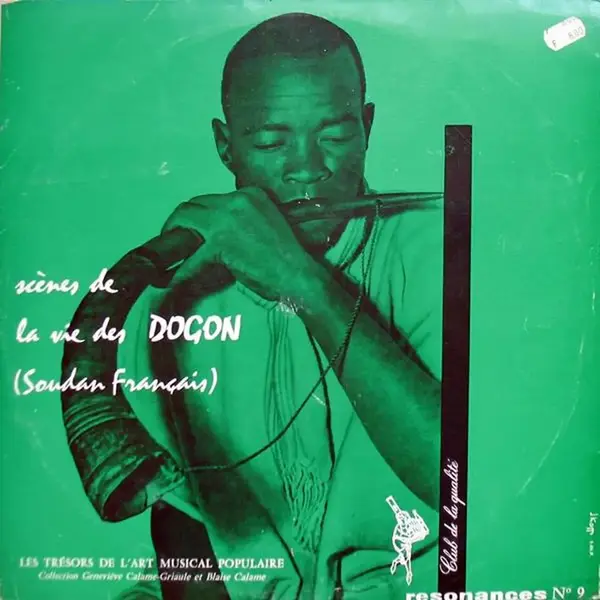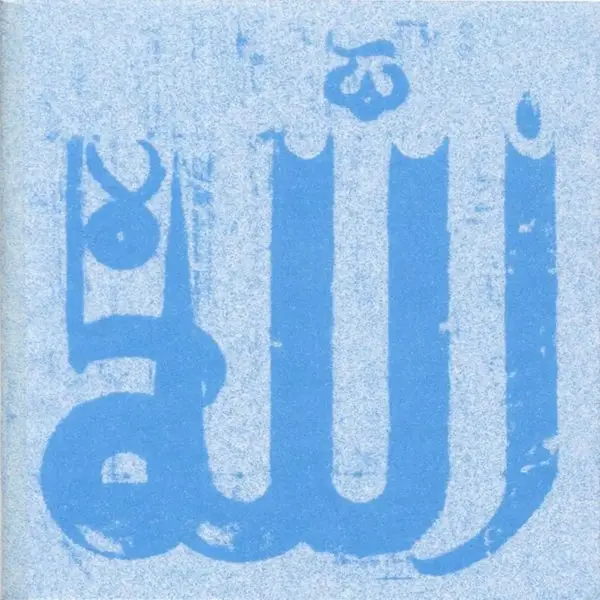
Nosotros somos el pueblo
Esta pieza está compuesta con 30 loops procedentes de 23 canciones diferentes.
Aquí puedes ver su collage y los discos donde se encuentran.
- album: AGAEB EL RAKASAT EL SABAA(the miracles of the 7 dances)
- artista: DALAAT FAKHAT
- lugar: Egipto, 1994
- album: Musique du Gabon
- artista: Celestin Mondjo
- lugar: Gabon, 1967
The moungongou mouth-bow is one of the instruments used during the bwiti ceremonies. In the playong position the string (raffia) is placed between the open lips of the player. In one hand the musician holds the bow and a small wooden stick which is applied with varying degrees of pressure to the string, which is struck sioultaneously with another stick held in the other hand. The sounds thus obtained are amplified and transformed (selection of harmonics) by the modifications in the volume of the oral cavity.
- album: Bahrain - Musical Atlas v. 23
- artista: Ali Khaled and his ensemble
- lugar: Barein, 1976
recorded in Manamah district
- album: New Ireland - Papua New Guinea — Prophet 21
- artista: Kara people
- lugar: Papua-Nueva Guinea, 1974
- album: Siberia: Songs Of Nature And Animals
- artista: Slava Egorovic Kemlil
- lugar: Siberia, 1996
- album: L'Afghanistan
- artista: Various Afghani Artists
- lugar: Afganistan, 1974
- album: Music of the Nile Valley
- artista: Unknown
- lugar: Egipto, 1981
- album: Grito En El Cielo - Vol 2
- lugar: Argentina, 1994
'Tonada De Verano'
- artista: Bernabe Montellanos
'No Soy De Estos Pagos' (Baguala de salta)
- artista: Gloria Pascualas Arias
- album: Drums Of The yoruba of Nigeria
- artista: Yoruba people
- lugar: Nigeria, 1956
recorded during the festival of Orishanla at Oyo
- album: Le Koto de Yuzen Kuzuhara
- artista: Yusen Kuzuhara
- lugar: Japon, 1978
Composición de Yoshizawa Kenggyô. Canto y Koto
- album: Music in the Karakorams of Central Asia
- artista: Hashim Shah
- lugar: Pakistan, 1974
grabado en Hunza y Gilgit.
- album: Yo me he Criao a Puro Campo
- artista: Atahualpa Yupanqui
- lugar: Argentina, 1971
- album: Irian Jaya: Disc Two
- artista: Grupo de LImlim
- lugar: Papua-Nueva Guinea, 1992
- album: v/a - Music in the World of Islam: The Human Voice/Lutes
- artista: Hussein Ali Zodeh
- lugar: Iran, 1975
Played by Hussein Ali Zodeh on the deep-bodied waisted lute with a long neck which is today the most popular classical instrument of Iran (Teheran, 1975)
- album: Huli Highlands. Papua New Guinea
- artista: Various
- lugar: Papua-Nueva Guinea, 1974
Entertainment music, played during a walk or a halt by Payabe. The instrument is a kulu pape, open bundle pan-pipe with a set of seven tubes. The player's breathing is so strong it sometimes dominates the actual flute sounds.
'Osta'
'Aleko'
- album: Ethiopie meridionale. musique des maale
f - artista: Maale people
- lugar: Etiopia, 2001
- album: Sacred Flute Music From New Guinea. Vol 1
- artista: Brothers Vagh and Gombreh
- lugar: Papua-Nueva Guinea, 1976
The Ravoi are played by the brothers Vagh and Gombreh, old men who said they were of the last generation who had undergone full male initiation and therefore knew how to play the flutes properly and all their cries or tunes. In this village we recorded seven different pairs of flutes. The Borai villages are several miles inland on a river. Recorded 14 April 1976 en los Montes Finisterre, en Papua
- album: cancionero de la liberacion
- artista: Marta Larreina-Oscar Rovito
- lugar: Argentina, 1973
Con “El Pueblo Peronista” se completan los temas que integraron el “Cancionero de la Liberación” de 1973, hoy rebautizado “Cancionero de los ‘70s”. “El Pueblo Peronista” (con letra de Marta Larreina y música de Oscar Rovito) también fue llamado “Himno Peronista”, por su estructura poético-musical y, además, si prestan atención, advertirán que en la segunda parte que comienza diciendo: “Perón al frente...”, se reprodu- cen (deliberadamente) las primeras notas de nuestro Himno Nacional Argentino (“Oíd mortales...”). El tema fue cantado a coro, como cierre de lo que fue aquella representación.
'Chants de mariage'
'Les Flutes du printemps'
- album: Dogons
- artista: Dogon people
- lugar: Mali, 1956
- album: Aissaoua Sufi Ceremony, Marrakesh, Morocco
- artista: Various
- lugar: Marruecos, 1998
grabado en marrakesh

